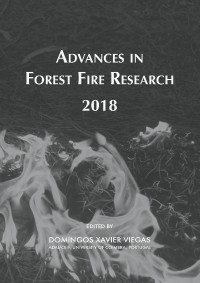Please use this identifier to cite or link to this item:
https://hdl.handle.net/10316.2/44637| DC Field | Value | Language |
|---|---|---|
| dc.contributor.author | Verma, Amit Kumar | |
| dc.contributor.author | Kaliyathan, Namitha Nhandadiyil | |
| dc.contributor.author | Bisht, N S | |
| dc.contributor.author | Nautiyal, Raman | |
| dc.contributor.author | Sharma, S D | |
| dc.date.accessioned | 2018-11-10T19:02:44Z | |
| dc.date.accessioned | 2020-09-05T02:04:31Z | - |
| dc.date.available | 2018-11-10T19:02:44Z | |
| dc.date.available | 2020-09-05T02:04:31Z | - |
| dc.date.issued | 2018 | - |
| dc.identifier.isbn | 978-989-26-16-506 (PDF) | |
| dc.identifier.uri | https://hdl.handle.net/10316.2/44637 | - |
| dc.description.abstract | Periodic forest fire in the Pine zone of Indian Himalayas has been portrayed as the great destroyer of forests. The coniferous forests in the Himalayan region, notably Pinus roxburghii stands are highly prone to fire. The lack of proper forest fire monitoring system in Pine zone is a major management issue needs attention for the long term viability. Hence the present study was attempted using Maximum Entropy (MaxEnt) method to predict the potential areas under fire across the Pine zone and to identify key variables associated with fire occurrence. A total of n=529 spatiotemporally independent fire incidence locations were used after auto-correlation testing. Bioclimatic environmental variables were used along with other anthropogenic, topographic, Forest type/canopy density variables. Spatial multi-collinearity of variables was tested where the variables with r > 0.7 were dropped from the analysis. The accuracy of the model was assessed using the area under the curve (AUC) and to assess the variables importance jackknife procedure was adopted. Hence, 100 model predictions were averaged to produce a probability map. The map was classified into four categories based on the probability value viz., Very highly, highly, moderately and least susceptible to fire. The results showed that the forest areas having moderate canopy density and near to village is highly affected by fire. The areas identified as very highly and highly susceptible to fire can be used for preparatory planning for management of forest fire in Pine Zone of Uttarakhand Himalayas. | eng |
| dc.language.iso | eng | - |
| dc.publisher | Imprensa da Universidade de Coimbra | por |
| dc.relation.ispartof | http://hdl.handle.net/10316.2/44517 | por |
| dc.rights | open access | - |
| dc.subject | Pine Zone | eng |
| dc.subject | MaxEnt | eng |
| dc.subject | Forest Fire | eng |
| dc.subject | MODIS | eng |
| dc.subject | Modeling | eng |
| dc.subject | Himalayas | eng |
| dc.title | Predictive distribution modeling of forest fire in pine zone of Uttarakhand Himalayas of India | por |
| dc.type | bookPart | por |
| uc.publication.firstPage | 1087 | - |
| uc.publication.lastPage | 1094 | - |
| uc.publication.location | Coimbra | por |
| dc.identifier.doi | 10.14195/978-989-26-16-506_120 | - |
| uc.publication.section | Chapter 5 - Decision Support Systems and Tools | por |
| uc.publication.digCollection | PB | por |
| uc.publication.orderno | 120 | - |
| uc.publication.area | Ciências da Engenharia e Tecnologias | por |
| uc.publication.bookTitle | Advances in forest fire research 2018 | - |
| uc.publication.manifest | https://dl.uc.pt/json/iiif/10316.2/44637/200980/manifest?manifest=/json/iiif/10316.2/44637/200980/manifest | - |
| uc.publication.thumbnail | https://dl.uc.pt/retrieve/11016820 | - |
| uc.publication.parentItemId | 55072 | - |
| uc.itemId | 68202 | - |
| item.grantfulltext | open | - |
| item.fulltext | With Fulltext | - |
| Appears in Collections: | Advances in forest fire research 2018 | |
Files in This Item:
| File | Description | Size | Format | |
|---|---|---|---|---|
| predictive_distribution_modeling_of_forest_fire.pdf | 928.34 kB | Adobe PDF |  |
Items in DSpace are protected by copyright, with all rights reserved, unless otherwise indicated.
